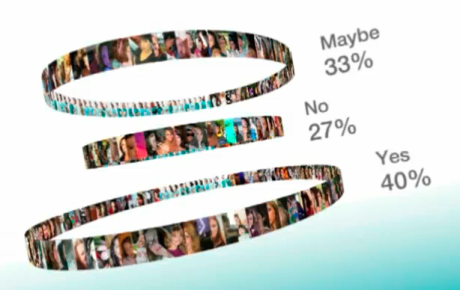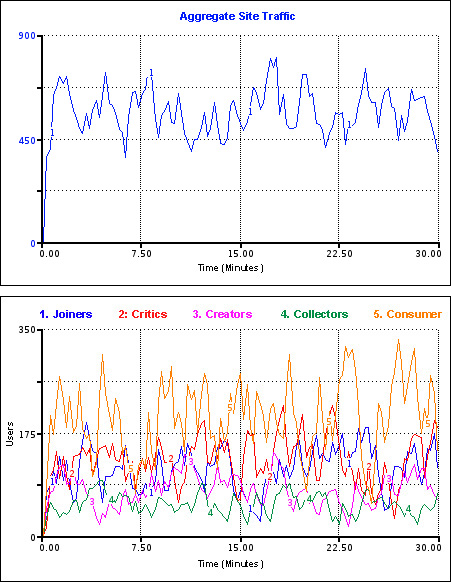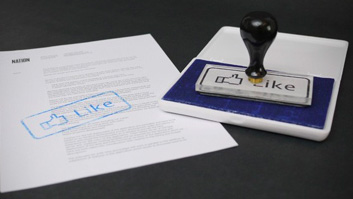Even as much as Social strategy is the hot topic these days, I still find many people and clients who don’t understand how important simple Social tactics are for any online interactive or communication. I’ve spoken with many clients who mistrust Social engagements, feel they aren’t ready for them, don’t want to put their brand out on a limb to be scrutinized, think it is too risky, too expensive, or too much trouble. Really, Social doesn’t have to be expensive or even expansive, but it should probably be pervasive.
It’s clear that many people think that Social strategy is just restating the obvious and doesn’t require any special attention (I’ve heard the same about Information Architecture). In point of fact, I’ve sat through and given presentations on the infamous social technographics ladder, and the truth is that many people don’t really understand what the fuss is about.
The overarching message most people take home is: People love to comment and share on the internet, so you need to get into “The Conversation” and throw up some “Share This” and “Like” buttons on everything. I happen to think this is a tragically generic response to a complicated challenge which warrants a more tactical approach.
Another way to look at it:
Regarding email and newsletters:
If I have a bug under my skin about CRM, say, I’ll try to have my audience segmented by all manner of factors such as interests, purchasing habits, shoe-size, etc… Not only do I need to tailor my communications where possible, but I need to include the type of content that will motivate the different social profiles to act (I’ll be referencing the profiles from the technographics ladder):
- Creators: Creators create for the joy of it, but also to satisfy their ego. They crave recognition, feedback, and Likes. Lionize people who are already creating content out there to drum up discussion and incite friendly competitiveness for others to create more content in response. Give the creators a platform or framework to play with and challenge them to participate, but also openly recognize their work when they do. Help them get noticed and they will reward you with even more content. I’d get permission and use a user photo in my email to show how much I mean it.
- Critics: Critics crave recognition for their opinion. Featuring comments shows that I am willing to spotlight my audience-member’s brilliance. If I’ve posted work from creators, that’s a good start as it will already invite discussion. I’d post a recent Facebook discussion topic, for example, in the body of the email to instigate conversation directly from the mailbox. Dare the critic with a question from the brand or from another critic or creator.
- Collectors: Hook a collector by providing a trendspotting-worthy link to information directly or tangentially related to my brand or service. It adds further value in the Collector’s mind to the email correspondence. Giving them something to bookmark and share with their peers and followers increases their own influence and thereby my own.
- Joiners: This is the primary email audience, so give them something more to join: an elite brand team or special interest group. I might sponsor a good cause and ask them to sign up under my banner. Joiners not only want to be part of something good, but partly self-identify based on the things they join. I could create groups for people to join ironically which center completely around key traits of my service or brand. Why so serious all the time?
- Spectators: These people are just happy to see that all of the above is happening. This is the second largest group. If they do not see anything interesting to consume by way of the above, my emails are trash-bound.

This interactive piece specifically targeted Joiners and Spectators who love Facebook-style quizzes and seeing how their friends answered.
I didn’t bother to mention product promotion or coupons, of course. That’s baseline bread and butter stuff. But they don’t build a lasting connection with a living-and-breathing audience because while they may satiate the common desire to consume, they don’t satisfy the more personal expressions of creation, critique, commenting, etc…
Now, if I’ve managed to fit enough hooks in my newsletter for each of the above, not only have I maximized my reach across the technographics spectrum, but I’ve managed to give them a bigger nudge to engage with me straight from the mailbox. As a consequence, I’ll have increased the email click-through rate.
My challenge is to stop thinking that I can leave many of the above elements out of my emails, that any of the above strategies are optional. If I am taking my audience seriously, I should always be filtering my communication objectives through the lens of my audience’s actual interests and tendencies, not my own corporate-dream of what my perfect client wants. Believe it or not, people don’t only live for coupons or a chance to win tickets to see Justin Beiber (god help me).
Advanced Notes:

Click to Embiggen! One of my predictive traffic models depicting aggregate user traffic and its composition of the social technographic profiles. This is part of a future post on "predictive analytics."
Not all click-through traffic is the same and it can be valuable to distinguish one from another. Continuing on the social technographics angle, I may have increased the click-through rate particularly for Spectators but not Creators, or for my Joiners and not Critics. This has implications for what content the user will expect to see when they’ve clicked through on the email.
Similarly, it is possible that more of one social type will unsubscribe more than another, depending on how imbalanced my content strategy is. Imagine trying to trump a new user-generated video contest on Youtube when the majority of your Creators and Critics jumped ship from your newsletter. I believe it is important to keep a systems-level view of your audience, picturing it as a type of ecosystem teaming with the different personality profiles. Depending on how well or poorly you treat the different groups, it’s likely some could die off or others take over… in the worst case leaving you with only the lowest form of newsletter subscriber: the freebie finder.
In short, it is as important to attend to the expectations and needs of the audience as it is to satisfy a campaign’s particular communication objectives. Without the audience, a message is a tree falling in the woods. It is merely one tool, but the technographics ladder provides a decent shorthand for thinking about an audience’s behavioral makeup and tendencies. It allows a team to get past tired questions like “why would someone comment on a video?” or “do we really need to post a user photo?” and get on with developing compelling and engaging interactive content for their audience.

